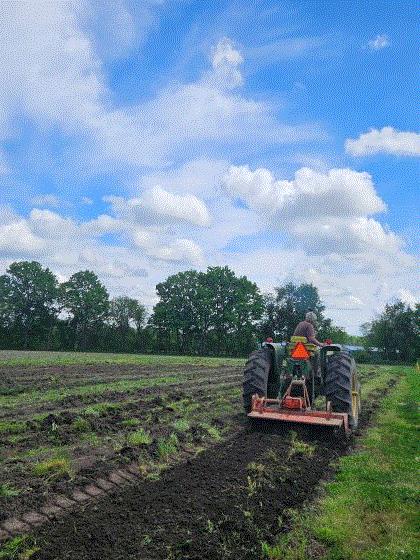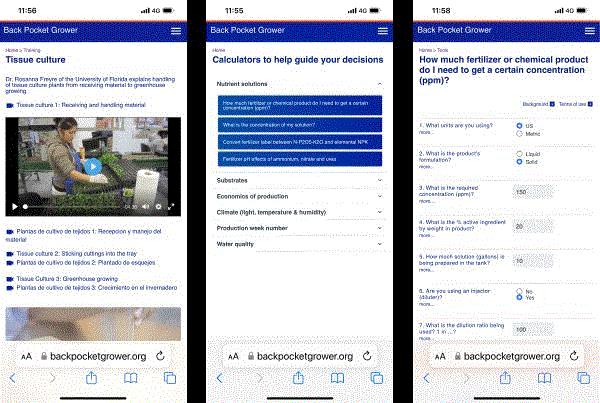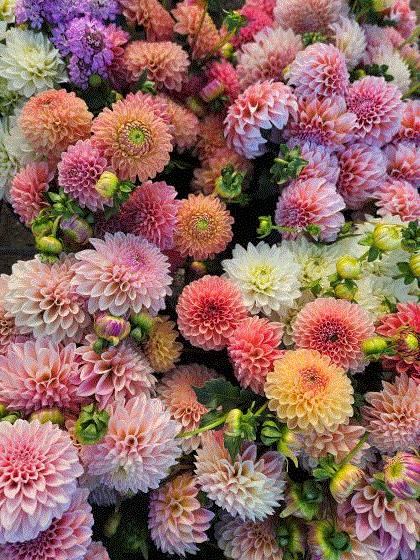July Farm Update

Rich prepping beds for our last succession of heat-loving summer annuals. Fall will be here soon!
Welcome to July, where weeds and Mother Nature test your best laid plans!
In previous seasons it seemed that the month of July would make or break our seasons. The wheels can really fall off the bus when the weeds and the insects start to run rampant. What a time to take a vacation, right? This is the first time we’ve been able to take more than a weekend vacation away from the farm since we started back in 2016. Team Forget Me Not will keep the farm running smoothly while we are away. In the meantime, Tater and I are dotting our T's and crossing our I's to get our to-do list done before leaving.
In some ways it is easier to stay local than it is try to leave for vacation. But this time it’s really important to me to be able to do this. The summer crops are just on the cusp of flowering and we wanted to sneak away before they start blooming like crazy. Tater and I were lucky enough to hire more help, but now we need to train the new hires while also accomplishing our daily tasks. Fingers crossed some quality training will help the rest of the season move smoothly. I’m hoping a small break will give me and Tater the rest we need to hit the ground running when we come back.
Tater and I hope you guys have a great time at Cultivate'24 in Columbus starting this weekend. This will be one of the first Cultivates we’ve skipped. Tater will be enjoying the beach at Lake Michigan with her blue parasol for a few days.
In this edition of Bloom Beat we’re talking about Back Pocket Grower, strategic crop planning, and more. With all that being said, let’s talk shop!

Back Pocket Grower Update
Fellow newsletter editor Dr. JC Chong highlighted the Back Pocket Grower app in his
latest PestTalks newsletter. (If you’re looking for another great newsletter to subscribe to, be sure to sign up for PestTalks!)
The University of Florida Extension and FreshLearn have released an updated version of its free website,
Back Pocket Grower. The website was designed by Paul Fisher and Maria Kinslow of UF Extension and Bruce McKay of FreshLearn as an easy digital resource for growers. The website is sponsored by industry partners in the Floriculture Research Alliance, the Ken and Deena Altman Online Extension Gift, and UF Extension.

Screenshots from the app. I think this would be an awesome staff training tool. Photo from U of Florida.
You can access the resources in the Back Pocket Grower either as a website or a mobile device application. Under the Tools tab, you’ll be able to get calculators for fertilizer, climates, substrates, crop budget, water quality and production week number. Under the Training tab, you’ll find short videos on how to monitor water quality, propagate cuttings, test for pH and EC, among many more topics.
Go
HERE to go to the website and download an app.
You can get training on the Back Pocket Grower website and app by signing up for courses in the UF Greenhouse Training Online program. The next course is Nutrient Management 1 (Introduction), which starts on July 8 and ends on August 2. Go
HERE to sign up for the courses.
I think this could be a great tool to keep in your arsenal to train your employees. Bookmark this for later, but it was too cool not to share!

Considerations for Crop Planning

We changed our dahlia crop plan this season: more outdoor dahlias, fewer in the greenhouse.
A few readers have asked how we determine what to grow, and how much? Tater and I are working on the crop plan for Christmas flowers for December. This will be a first for us. But it is necessary since we are hiring more year-round help, and the best way to keep your talent is to have enough work to keep them employed (at least in my experience).
This year, we are hoping to extend our sales by another month. We are currently knee-deep in this process for Christmas. I don’t have a foolproof formula and there are certainly many considerations, but here are four thoughts to help you decide what to grow and how much.
Approximate how much revenue you need to generate. To be honest, this is one of the most important considerations when we create our crop plan each season. Be sure to take into account how many dollars per square foot you need to generate to break even, and plan for your profit. No sense in working harder for less money. Greenhouse space requires a higher return on investment in order to account for the costs of energy, recovering with plastic and depreciation. Remember, what makes financial sense for you and your farm may be different than other farms around you. Knowing your costs is paramount and will give you a black-and-white framework for deciding what to grow.
Know the crops you are good at and build from there. Tater and I try to have four to five seasonally relevant staple crops per season. In the spring we grow anemone, ranunculus, stock and snapdragon. Summer are dahlias, sunflowers, zinnias, strawflower and lisianthus. For fall, we transition to indoor dahlias, lisianthus, chrysanthemums and snapdragons. The staple crops we have in inventory each week. But we will also select five or six additional items to experiment with. Florists get bored easily, and it’s always fun to surprise them with a smattering of new products. Tater and I have learned a few things and each year we add on to our staple crops. But we didn’t start out this way. Don’t overextend yourself by trying to grow too many things and wind up excelling at none of them. Be strategic, energy is finite, do what you’re good at, and pick a new crop to learn about, too.
Identify needs in the marketplace. I had the privilege to work at another flower farm before starting Forget Me Not. Not only did I learn a lot, I also learned about what local florists wanted more of. We would always sell out of anemone and ranunculus. This farm was known for their impeccable lilies, and they wanted to keep that focus. It was a no-brainer for Tater and me to start filling that market need, and winter anemone and ranunculus were the two crops that put our little farm on the map. I am forever grateful for my time at the lily farm, and it really helped us find our market niche.
Most importantly, don’t forget to market your new crop or idea to your client base! I always ask our florists what they would like to see more or less of. When in doubt, ask your clients for feedback. I have found that when we honor the requests of our clients, they are incredibly excited to buy the crop once we have it. There's nothing worse than having an unsold crop bloom and fade. But local flowers at Christmas are few and far between in our area. If we are successful it should fill a need in the marketplace.

Social Media Tips for American Grown Flowers Month

Tater is excited for American Grown Flowers Month. You should be, too!
The folks at
Certified American Grown have some tips and tricks to help farmers and vendors promote American-grown flowers for the month of July. If you’re wondering how you can join in on the fun, check out the prompts below to help you craft your posts.
According to Anna Kalins, program manager for American Grown, “In an era where digital connectivity is paramount, it’s time to leverage the power of social platforms to highlight the significance of American-grown flowers and foliage. We are excited to see farms and vendors come together to share their stories, showcase their stunning blooms, and gain the recognition they deserve.”
Here are their tips:
Week 1 – Showcase Varieties: Farms and vendors are invited to spotlight the varieties they grow and sell. Share images and descriptions of beloved flower and foliage varieties, provide behind-the-scenes glimpses of them in production, and engage audiences with fun facts and trivia.
Week 2 – Share Your Story: Connect with your audience on a personal level by sharing the unique journey behind your farm or shop. Highlight your origins, values, and the dedicated team behind your business.
Week 3 – Facts & Stats: Educate your audience about the American-grown floriculture industry. Share interesting facts, industry insights, and the impact of supporting locally grown flowers and foliage. Highlight sustainable practices and the role of American-grown floriculture in supporting local communities.
Week 4 – We Are American Grown: In the final week, we will deliver a powerful, unified message celebrating the beauty and impact of our collective efforts. Farms and vendors are encouraged to post the same message with a captivating picture of their farm or shop.
Be sure to tag @americangrownflowers and use the hashtag #AmericanGrownMonth. For resources and details such as graphics, materials and ideas, farms and vendors are encouraged to check out the
American Grown Month Toolkit.
Join in celebrating the diversity and splendor of American Grown flowers and foliage, and together we can cultivate the American Grown Movement, elevate awareness, and celebrate the artistry and dedication behind our homegrown floral industry.
Learn more and get the toolkit
HERE.


Enthusiastically!
Lindsay Daschner (and Tater)
Editor-at-Large—Bloom Beat
Owner—Forget-Me-Not Farms
This email was received by 6,306 of your fellow fresh-cut flower growers!
If you're interested in advertising in Bloom Beat, contact Kim Brown and she will hook you up!